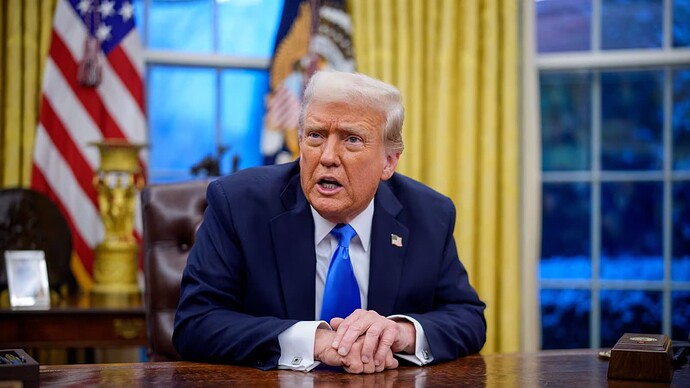U.S. President Donald Trump in an all-caps post on Truth Social Thursday teased a new round of sweeping reciprocal tariffs, matching the higher rates other nations charge to import American goods.
“THREE GREAT WEEKS, PERHAPS THE BEST EVER, BUT TODAY IS THE BIG ONE: RECIPROCAL TARIFFS!!! MAKE AMERICA GREAT AGAIN!!!” Trump posted early Thursday.
Reciprocal tariffs were one of Trump’s core campaign pledges — his method for evening the score with foreign nations that place taxes on American goods and to solve what he has said are unfair trade practices.
“Very simply, it’s if they charge U.S., we charge them,” Trump said Sunday, explaining why he intends to enact reciprocal tariffs. He is set to share more details on the tariffs ahead of his visit with Indian Prime Minister Narendra Modi, White House press secretary Karoline Leavitt told reporters on Wednesday.
Leavitt echoed Trump’s message on Wednesday, saying, “This is something he believes strongly in, and it’s very simple logic as to why the president wants to impose reciprocal tariffs.” Other nations have been “ripping off” the U.S., she said, “and that’s why the president believes this will be a great policy that will benefit American workers and improve our national security.”
Still, it remains unclear exactly what Thursday’s announcement will look like. It has already been delayed — it was originally promised Tuesday or Wednesday. And Trump economic advisers Peter Navarro and Kevin Hassett both spoke to CNN this week, attempting to soften expectations about this week’s plans. Hassett said Wednesday negotiations were still ongoing, and Navarro said Tuesday that this week’s announcement could be to order an investigation into how to implement reciprocal tariffs rather than a directive to put them in place across the board.
Tariffs are a key part of Trump’s plan to raise revenue to pay for the extension of his 2017 tax cut on top of other promised tax cuts. But the burden of tariffs could ultimately fall on American consumers, economists say. Taxed importers pass the costs on to retailers, which then raise prices for consumers.
The tariffs are likely to hit developing countries hardest, especially India, Brazil, Vietnam and other Southeast Asian and African countries, given that they have some of the widest differences in tariff rates charged on U.S. goods brought into their countries compared to what the U.S. charges them.
For instance, in 2022, the U.S. average tariff rate on imports from India was three per cent, whereas India’s average tariff rate on imports from the U.S. was 9.5 per cent, according to World Bank data.
However, given Trump is meeting with Modi on Thursday, the two leaders could reach an agreement that avoids or delays new tariffs on Indian exports to the U.S. Last year, India exported US$87 billion worth of goods to the U.S., while the U.S. exported $42 billion worth of goods, according to Commerce Department data.
The reciprocal tariffs join the 10 per cent across-the-board tariff that went into effect last week on top of other tariffs on Chinese goods and stricter 25 per cent tariffs on steel and aluminum that Trump announced on Monday.
If Trump goes forward with the 25 per cent tariffs on Mexico and Canada that were pushed back until March 1, the total direct cost of the import taxes on Chinese, Mexican and Canadian goods would amount to a tax hike of more than $1,200 per year for the typical American household, Peterson Institute researchers have found. Reciprocal tariffs would likely add to that number.
What could get more expensive?
The United States imports goods that are cheaper to make abroad or that may even be impossible to produce on U.S. soil.
Medical-grade gloves as well as resistors and capacitors – tiny components found in microwaves and washing machines – are among the products that could face a price hike, according to Greg Husisian, a partner at law firm Foley & Lardner who specializes in international trade issues. Also certain to get a lot more expensive from dollar-for-dollar tariffs are European cars, which currently face a 2.5 per cent tariff in the U.S… In contrast, American cars exported to European Union countries face a 10 per cent tariff.
If Americans can’t switch to cheaper alternatives, they’ll probably wind up paying the cost of the tariffs, Justin Weidner, an economist at Deutsche Bank, said. But it also depends on whether manufacturers, retailers or other companies along the supply chain can absorb any of those costs themselves.
